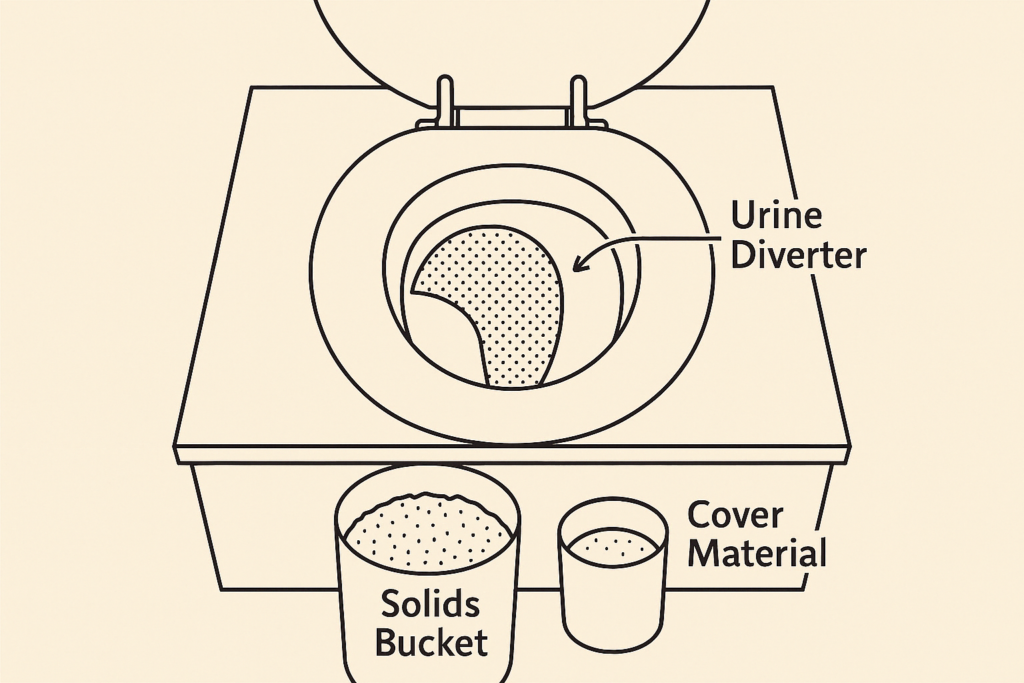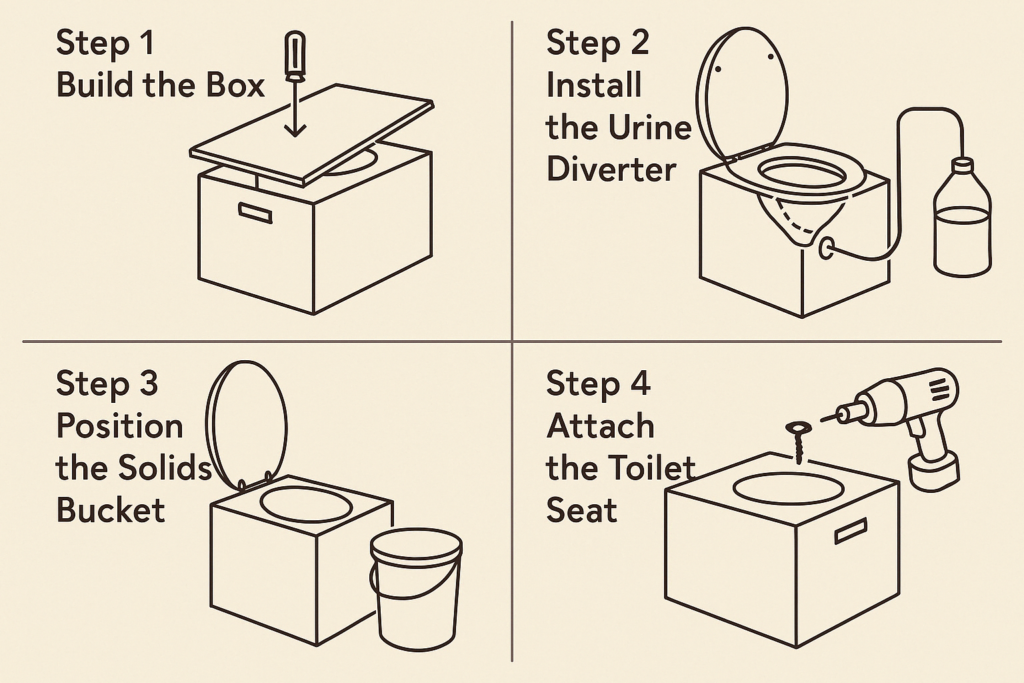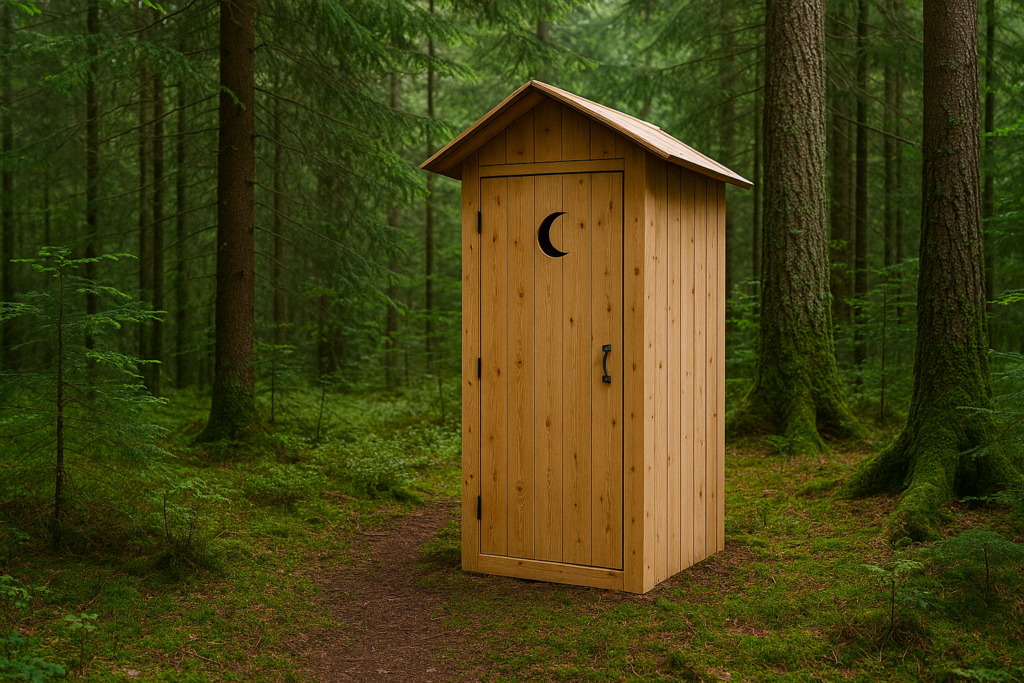Let’s be honest. The idea of pooping into a bucket of sawdust sounds… a little rustic. Maybe even gross. But what if I told you it can be completely odorless, eco-friendly, legal, and even kinda satisfying?
If you’re living off-grid, building a cabin, converting a van, or just sick of flushing precious drinking water down the drain, a composting toilet might be exactly what you need. Not the gimmicky plastic kinds that cost a fortune — I’m talking about a DIY system that works.
By the time you’re done reading this guide, you’ll know how to build your own composting toilet step-by-step, how to use it without offending noses, and how to stay on the right side of the law — even in the UK.
Why a Composting Toilet Just Makes Sense
Before we dive into the how-to, let’s talk about the why. Composting toilets don’t use water, don’t require plumbing, and can turn your waste into safe, usable compost. Sounds wild? It’s not. It’s how nature works.
When done right, you don’t get smells. You don’t get flies. You don’t get sewage problems.
Instead, you get independence — and a surprisingly manageable compost pile.
The Secret? Separation.
Here’s what most people don’t tell you: the key to a successful composting toilet is separating urine from solids.
Urine is sterile, nutrient-rich, and smells (a lot) when mixed with feces. Keep them apart, and you control both odor and moisture — the two biggest issues in composting toilets.
So, your first job?
Build or buy a urine diverter.
This simple funnel-like device sends urine into a separate container while solids drop into your compost bin. You can find them online or make your own using a cut plastic bowl and a bit of plumbing pipe.

What You Need to Build a Composting Toilet
Here’s a no-fuss list of materials:
- A sturdy wooden box or bench with a hinged lid
- A toilet seat
- A 20L bucket (for solids)
- A urine container (5–10L)
- A urine diverter
- Sawdust, wood shavings, or coco coir (for cover material)
- Ventilation pipe or fan (optional but recommended)
- Screws, sealant, basic tools
You’ll also want gloves, a mask (for building, not using), and a sense of adventure.
Step-by-Step: Build Your Composting Toilet

Step 1: Build the Box
Make a simple wooden box tall enough to hold a 20L bucket inside. Cut a hole in the top to fit your toilet seat. Hinge the lid so you can lift it for maintenance. Leave one side of the box open or add a door for easy bucket access.
Step 2: Install the Urine Diverter
Attach your diverter under the toilet seat area so it directs liquid into your urine container. You may need to test angles — a slight forward tilt helps. Use tubing to route the urine safely into a sealed jerry can or outflow pipe.
Step 3: Position the Solids Bucket
Place the bucket underneath the seat opening. Line it with a compostable bag if you want easy clean-up. This is where the “business” goes, along with a scoop of cover material after every use.
Step 4: Add Ventilation (Optional)
Cut a hole in the back of the box and install a vent pipe or small computer fan powered by solar or battery. This keeps air flowing and prevents any lingering odors.
Step 5: Attach the Toilet Seat
Screw your toilet seat onto the lid, seal any gaps, and you’re ready to roll (well, compost).
How to Use It (Without Making a Mess)
- Sit down. Always. No exceptions.
- Pee goes into the diverter. Solids go into the bucket.
- Cover with a scoop of sawdust or similar after every use.
- Empty urine container every 1–2 days (dilute 1:10 with water and use on plants — it’s gold).
- When the bucket is full, take it to your compost bin and let nature do the rest.
But What About the Smell?
Here’s the shocker: it doesn’t smell like a toilet.
A well-managed compost toilet smells like a forest floor — earthy and mild.
Why?
- Urine is diverted.
- Solids are covered in carbon-rich material.
- Good airflow pulls moisture and gases out.
The only time it smells is when you don’t follow those steps.
How Long Does It Take to Compost?
Feces takes 6 months to 2 years to fully break down, depending on temperature, moisture, and oxygen. In a warm, well-aerated compost pile, it breaks down surprisingly fast. Just don’t rush it.
You need a dedicated compost bin — not your kitchen pile. Ideally, let it sit for a year before using the compost on fruit trees, shrubs, or non-edibles.
No Compost Bin? No Problem.
If you don’t have space for a compost pile, you’ve got two options:
- Create a long-term storage drum. Let it sit sealed for a year before disposing of it safely.
- Bag it, seal it, and treat it as waste. Not ideal, but in remote setups, it’s a last resort.
Legal Stuff: Is This Allowed in the UK?
Yes — with caveats.
In the UK, composting toilets are legal for off-grid and domestic use. But you’re responsible for managing the waste safely. That means:
- No direct dumping into land or water
- Composting on-site or licensed disposal
- Urine dispersal must not contaminate watercourses
If in doubt, check with your local council. Most are surprisingly chill, especially if you’re managing the system responsibly.
Bonus Tips for Long-Term Success
- Use a carbon-rich cover. Sawdust, dry leaves, and shredded paper — all help control smell and aid composting.
- Keep it dry. Moisture is the enemy. Wet = stink. Cover = no stink.
- Keep a spray bottle of vinegar or EM (effective microbes) nearby for freshening up.
- Label everything. Especially the urine jug.
Final Thought: This Isn’t Just a Toilet. It’s a Revolution.
When you build a composting toilet, you’re not just saving water. You’re reclaiming autonomy, closing the loop on waste, and proving that you don’t need a fancy flush to live clean.
So yes, you can use toilet paper (just not the quilted mega-rolls).
Yes — it works in winter (just use insulation or compost longer).
And yes, your guests will be shocked that it doesn’t smell.
But most of all?
You’ll feel ridiculously proud every time nature calls — and you answer in the most eco-conscious way possible.
Go forth. Build it. Use it. And compost like a boss.





[…] home is also equipped with a number of sustainable features such as a composting toilet, hydronic radiant heating in the floors, a Lunos air exchanger with a heat recovery system, and a […]
[…] could be solved by installing a water tank, or a rainwater collection system, and perhaps adding a composting toilet. There is also no electrical system in place, so the addition of, for example, a solar power array […]